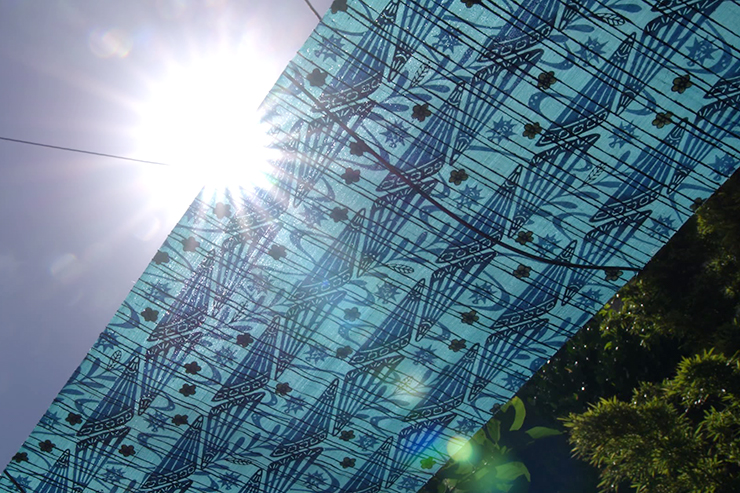
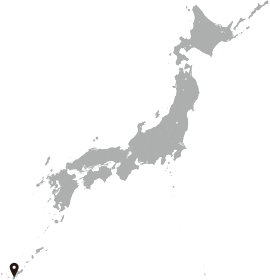 There are many variations of dyed textiles that have handed down for generations, throughout Japan. Some exist until today, while others disappeared completely without a trace. The one in Okinawa can be considered as one of the original forms, and it also keeps its old handwork production style. From the north to south ends of island, a variety of dyed textile is made with different materials and techniques.
There are many variations of dyed textiles that have handed down for generations, throughout Japan. Some exist until today, while others disappeared completely without a trace. The one in Okinawa can be considered as one of the original forms, and it also keeps its old handwork production style. From the north to south ends of island, a variety of dyed textile is made with different materials and techniques.
Some of the major types of textile include Basho-fu (abaca cloth) of the northern area where basho (Japanese banana plants) grows, Hanaori from the Yomitanzan district, which used to prosper as a trading port, Chibana Hanaori from the central area, and Shuri-ori, Ryukyu Bingata (resist-dyed cloth) and Ryukyu Kasuri (splashed pattern) from the areas surrounding the Shuri-jo Castle. In addition, peripheral islands have their own style of textile named after each island, such as Kume-jima Tsumugi (pongee), Miyako Jofu (high-quality hemp cloth), Yaeyama Jofu and Yonaguni-ori.
By reaching down to the profound culture of Okinawa that extends from dyed and woven textile to pottery, lacquer ware and dance, we are able to see the reminiscence of the ancient kingdom that once flourished in this island gradually emerge. The Ryukyu Kingdom that lasted for four hundred and fifty years.
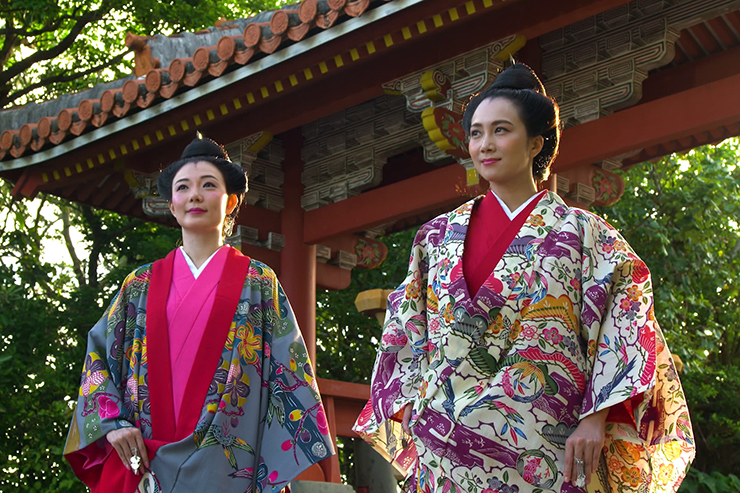
Okinawa Islands are located at the southernmost tip of the Japanese Archipelago. Just across the ocean are Taiwan and the continental China. The Kuroshio Current has been flowing in from the south, bringing in various blessings to the islands. If this current were flowing in a different direction, Okinawa, and even Japan may have had been completely different from what we are today. The current of the ocean seems to have been the essential factor for the formation of Okinawa since the olden days to today.
Imagine one day a delegation dressed in strange outfits on board a large boat, came landing on the shore. They all dress their hair in an unfamiliar fashion and speak foreign language. Boxes from overseas are carried into the reception hall of the castle, each of them filled with amazingly beautiful gifts. We can almost hear the admiration-filled voices coming out of the servants on the moment they opened these boxes.
The Ryukyu Kingdom had been creating its own unique culture, combining the climate and aesthetics of the island with foreign culture that continuously flowed in through trading with Japan, the continental China and countries of Southeast Asia.
Especially, the dyed textile had spread to other neighboring islands, and became not only a popular trade goods but also clothing for the royal family and upper class. Later in the history, when the occupation by the Satsuma Domain had started, it became a tribute to the Japanese government. Moreover, the textile showed its characteristic most distinctively when used as costumes and accessories for shrine maidens known as Noro, Niigami, or Tsukasa, who administered the ceremonies for various rituals. The best quality textile was produced as the offering to deities, royal outfits and the sign of their own national identity. Over many generations, the kingdom and its people devoted themselves to improve technique.
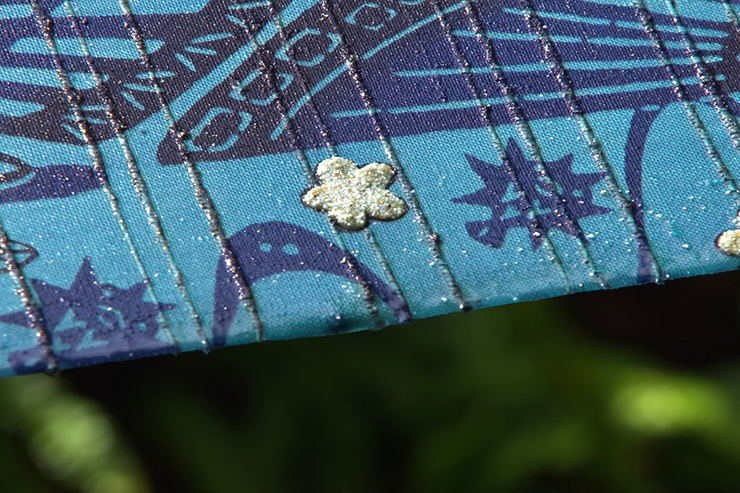
However, the changes in history eventually brought the Ryukyu Kingdom to dissolution, in the form of punishment given by the Meiji government of Japan. Losing the support of the kingdom, dyers and weavers were gradually forced to discontinue their professions. Yoshitaro Kamakura, who later became a dyeing and weaving artisan and then a researcher of Okinawa culture, visited each closing bingata dyer’s shop and collected their dye patterns and samples. He also took a large number of photographs and conducted interviews in order to record what was left of the Ryukyu culture.
The group of Nihon Mingei Undo (Japanese folk art movement) led by Muneyoshi Yanagi first visited Okinawa at the end of 1937. The moment they laid eyes on a very few goods of the dyed textile, pottery and lacquer ware that were sold at a market, they were fascinated by their extraordinary beauty. They bought as many of goods as they could, brought back to Tokyo and put on exhibition at the Japanese Folk Art Museum. About a year prior to the outbreak of the WWII, it was the first time the Ryukyu culture was introduced to the people of the main land Japan. It was close to a sheer miracle that these treasured artifacts accumulated during the Kingdom period were transported out of the island at this timing and as a result were protected from the devastation of war. This collection of material made a great contribution in the postwar restoration of Okinawa culture. They can be viewed today, at locations such as Okinawa Prefectural University of Arts, Okinawa Prefectural Museum and Art Museum, and Japan Folk Art Museum.
Okinawa had lost everything in the war. From the pieces of textile they somehow managed to find, successors of each textile started the restoration in each location. Toshiko Taira for Basho-fu, Sada Yonamine for Yomitan Village’s Hana-ori, Hatsuko Miyahara for Shuri-ori, Kame and Koshiro Oshiro for Ryukyu Kasuri, just to name a few. Eiki Shiroma of the Shiromas and Sekko Chinen of the Chinens were the two of the three head families of Bingata dyers that served the upper class of the kingdom. They managed to restart their craft by carving the bingata patterns using army maps, making glue spatulas from music records discarded by U.S. soldiers, and using bullet shell cases as metal caps.
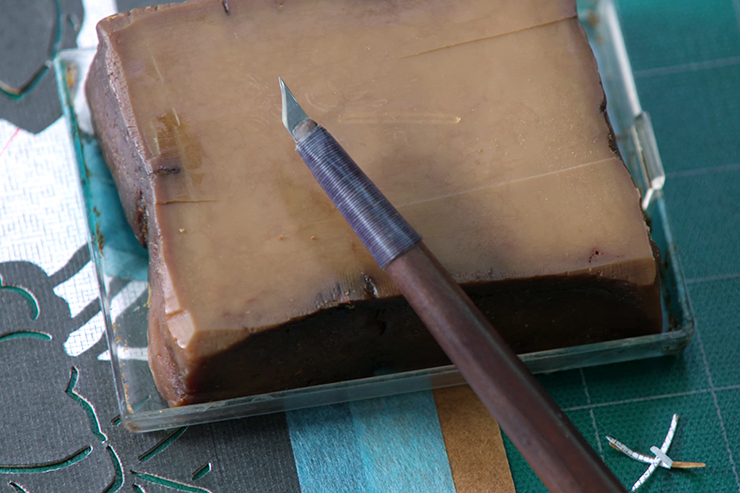
「“Everything we had cherished was burnt and reduced to ashes. Those who survived must restore what has been lost.” The effort made by many people has saved the tradition from the verge of extinction.
The time that passes in the island, the sound of waves that surrounds it, and the graceful nature of the people who dwell in – these aspects of Okinawa may be what made the miraculous resurrection of the culture possible.
There once was a kingdom on this island. Every touch on the Okinawan textiles allows you to experience all of what has been woven into the cloth beyond the time.
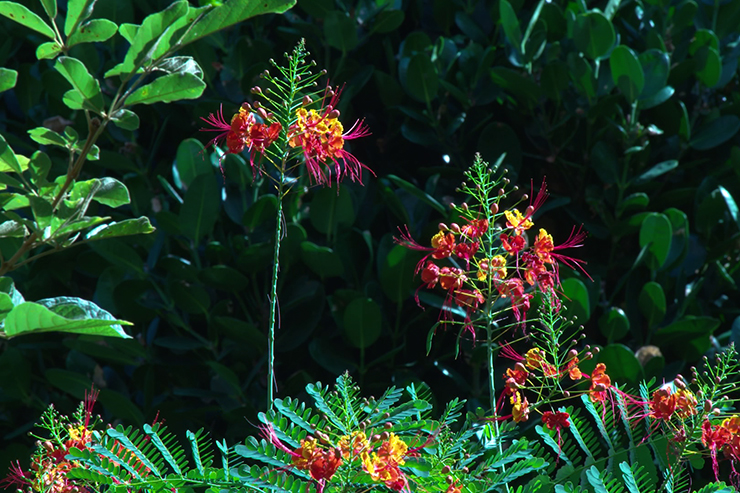
- Textile :
- Aizu Momen
- Textile of Okinawa
- Ryukyu Bingata
- Ryukyu Kasuri
- Yuki Tsumugi
- Old textile
- Dyeing :
- Indigo

